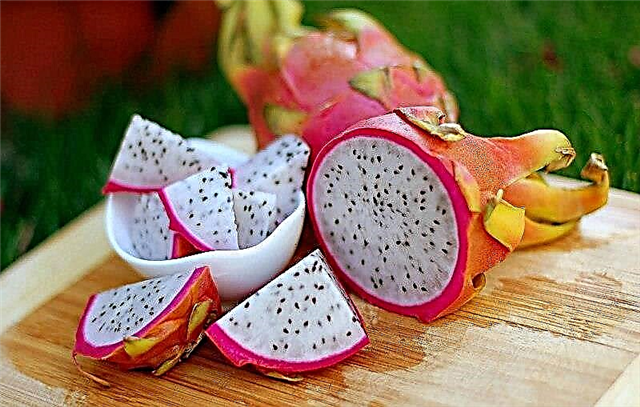If you are planning a vacation in Thailand, then you simply must try the exotic fruits that this country has to offer. It is quite difficult to understand all the variety, but our review will allow you to get acquainted with the most popular and beloved by tourists from all over the world exotic delicacies. So, what the delicious fruits of Thailand look like.
Dragonfruit
Season. It blooms all year round and only at night.

Description. Pitaya (another name for the plant) is an exotic fruit the size of a large apple, the fruit of one of the types of cactus. The color of the fruit ranges from bright pink to red scaly skin, and from creamy white to lilac or red flesh. Inside the fruit, there are many small black seeds, like in kiwi.
Taste. It resembles a mixture of boiled beets and kiwi.
Properties. It is used in dietary nutrition: for endocrine diseases (for example, diabetes), has a healing effect on the digestive system.
Lychee
Season: April - June.

Description. Fruit volume with a small walnut. It has a very "tasty" aroma associated with strawberries. The dense, thin skin of the fruit is bright red in color. The pulp is creamy, jelly-like, like that of grapes. Inside there is a large bone that resembles an acorn.
Taste. Sweet, slightly tart (slightly knitting), there is a slight wine shade. In general, the fruit tastes like grapes.
Properties. The fruit helps with sore throat and abdominal pain, cough. The bone is often used as a pain reliever, used for orchitis, intestinal problems, and neuralgia.
Jackfruit
Season. All year round.

Description. Quite a large fruit, reaching 34 kg. The peel is yellow-green in color, prickly. Inside the fruit, there are many independent pieces, the size of a medium sweet pepper. The pulp is yellow and quite elastic. Sold in segmented and prepackaged segments.
Taste. The fruit is not juicy, with an unusual sugary-sweet taste, reminiscent of a cross between melon, marmalade and chewing gum.
Properties. Very nutritious, but low-calorie fruit. A source of potassium and vitamin A.
Noni
Season. All year round.

Description. The most popular and demanded Thai fruit. Other names for the fruit are "cheese" and "vomit" fruit. Most often it can be seen on the shelves as a juice. It is also used for the production of teas and cosmetics. The ripe fruit has a yellow, almost white skin.
Taste. Bitter, not very pleasant.
Properties. It is believed that the fruit contains a set of vitamins: C, A, E, B1, B2, B6, B12, folic acid and much more.
On a note. Noni is a controversial fruit that has generated a lot of controversy. Sellers vying with each other talk about the beneficial properties of the plant, and scientists are skeptical about its benefits. It is noteworthy that the anti-doping committee included Noni juice on the list of prohibited drugs.
Durian
Season: May - July.

Description. Another name is "king of fruits". It is impossible to remain indifferent to the duriant: either you will fall in love or you will hate. Has an extremely pungent unpleasant odor. It smells so strong that in many public places in Thailand, you can see a sign with a ban on entry with this fruit.
The fruit itself is about the size of a soccer ball. Can be any of two shades: either yellow or green. The rind is spiky and very tough. The pulp is similar in consistency to butter - tender and creamy. There are several large bones inside.
Taste. Despite the disgusting aroma, it tastes amazing. The fruit is individual and unparalleled, its taste defies description. Each person who tries it evokes his own associations
Properties. Contains many vitamins of type B, in terms of the amount of vitamin C it has an advantage over orange. The fruit is very nutritious and satisfying: it is rich in proteins, carbohydrates and fats.
On a note. According to some sources, if durian is frozen, the smell will disappear, while the taste will remain. Not recommended for use with alcohol. Better to buy pre-packaged.
Rambutan
Season: May - June. According to some reports, up to October.

Description. It is translated from Malaysian as "hair". A small "hairy" about the size of a large walnut is a bright pink fruit, the tips on the "hairs" have a greenish color. It looks like a flower. The pulp is white, translucent and firm. There is a large bone inside. There are 2 types: round and egg-shaped.
Taste. Pretty juicy fruit. The round fruit is very sweet, the ovoid fruit is less sweet.
Properties. It has cleansing properties, it is recommended during the period of illness or after it, when the body is most weakened. It has a beneficial effect on the skin. Contains a lot of vitamins, proteins and carbohydrates, niacin, calcium, iron, phosphorus.
[leveltravel country = ”TH” city = ”Pattaya”]
Carambola
Season: May - August.

Description. Another name for "star fruit". The fruit is star-shaped in section. The color of the fruit is golden yellow or green. Outwardly, they vaguely resemble bell pepper. It can be compared in size to a large pear. Carambola does not need to be peeled, it is enough to wash, cut and eat.
Taste. Quite juicy fruit, reminiscent of a mixture of pineapple, apple and kiwi, while not very sweet. Maybe with a little sourness, however, be careful: sour fruits are unripe.
Properties. Contains an abundance of oxalic acid, those fruits that are rich in vitamin C with sourness. It is not recommended for people suffering from diseases of the digestive system.











